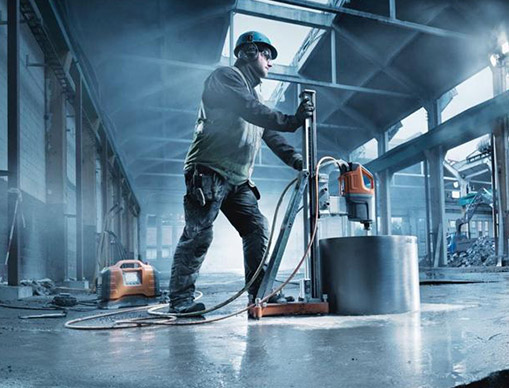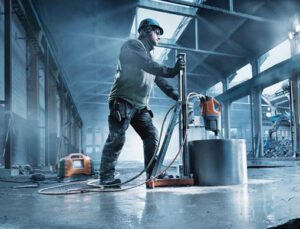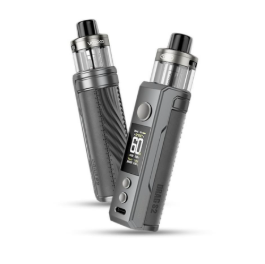ASME B16.5 Flange: Specifications, Types, Materials, and Industrial Applications
The ASME B16.5 flange is a globally recognized standard developed by the American Society of Mechanical Engineers. It provides dimensional and material specifications for pipe flanges and flanged fittings ranging from NPS ½” to 24” and includes various pressure classes. These flanges are essential components in pressure piping systems used across industries like oil and gas, chemical processing, and power generation. This article delivers a comprehensive overview of ASME B16.5 flanges, including their specifications, types, materials, and applications.
ASME B16.5 Standard Overview
ASME B16.5 outlines the requirements for pipe flanges and flanged fittings in terms of:
- Pressure-temperature ratings
- Dimensions and tolerances
- Bolting and gasket requirements
- Material specifications
- Marking and testing
The standard applies to flanges made from forged or cast materials and is used primarily for piping systems that carry fluids under high pressure and temperature. Flanges are manufactured according to pressure classes: 150, 300, 400, 600, 900, 1500, and 2500, each with defined pressure and temperature limits.
Common Types of ASME B16.5 Flanges1. Weld Neck Flange (WN)
Description:
The weld neck flange features a long, tapered hub that gradually transitions to the pipe wall thickness. This design offers smooth stress distribution between the flange and the connected pipe.
Connection:
Butt-welded to the pipe.
Applications:
- High-pressure systems
- High-temperature pipelines
- Critical applications where stress concentration must be minimized
Advantages:
- Excellent fatigue resistance
- Ideal for severe service conditions (thermal cycling, high bending loads)
- Reliable under extreme mechanical stress
Industries Used:
Petrochemical, offshore oil rigs, refineries, and power generation plants.
2. Slip-On Flange (SO)
Description:
Slip-on flanges are designed to slide over the pipe and are then welded on both the inside and outside to provide strength and prevent leakage.
Connection:
Fillet welded on both the ID and OD of the flange.
Applications:
- Low-pressure fluid systems
- Cooling water lines
- Fire protection systems
Advantages:
- Easy to align and install
- Lower fabrication costs
- Requires less accurate pipe cutting
Industries Used:
HVAC, water treatment, general-purpose industrial applications.
3. Socket Weld Flange (SW)
Description:
The socket weld flange has a recessed area (socket) into which the pipe is inserted. The joint is secured with a single fillet weld around the outer diameter.
Connection:
Fillet welded only on the outside of the pipe.
Applications:
- High-pressure, small-diameter piping systems
- Hydraulic lines
- Steam lines
Advantages:
- No need for beveling the pipe
- Good flow characteristics due to smooth bore
- Suitable for high-pressure fluids under 2 inches in diameter
Industries Used:
Power plants, chemical processing, compressed air systems.
4. Threaded Flange (TH)
Description:
Threaded flanges (also called screwed flanges) have internal threads that allow them to be screwed directly onto pipes without welding.
Connection:
Screwed onto male-threaded pipes.
Applications:
- Low-pressure systems
- Hazardous areas where welding could pose a risk (e.g., explosive atmospheres)
- Temporary piping setups
Advantages:
- No welding required
- Quick and easy to install and remove
- Ideal for small diameter piping
Industries Used:
Gas lines, utility piping, and flammable liquid transport systems.
5. Blind Flange (BL)
Description:
Blind flanges are solid disks used to block off pipeline ends or pressure vessel openings. They have no bore (center hole) and are bolted in place.
Connection:
Bolted connection with gaskets for sealing.
Applications:
- Pressure testing
- Isolation of piping sections
- Future expansion provisions
Advantages:
- Allows access to closed systems
- Can be used for hydrostatic testing
- Easy to install and remove
Industries Used:
Chemical, oil and gas, and pipeline maintenance operations.
6. Lap Joint Flange (LJ)
Description:
The lap joint flange works in conjunction with a stub end. The flange itself does not contact the fluid and is free to rotate, which helps with bolt hole alignment.
Connection:
Slip over the pipe and rests on the back of the stub end.
Applications:
- Systems requiring frequent dismantling or inspection
- Corrosive environments (the flange can be carbon steel, while the stub end is corrosion-resistant)
- Misalignment-prone piping layouts
Advantages:
- Easy to align bolt holes
- Economical for large or expensive alloy piping
- Reduced flange face contact with fluid
Industries Used:
Food processing, pharmaceuticals, shipbuilding, and chemical plants.
Material Specifications
ASME B16.5 flanges are manufactured in various materials depending on the service requirements, including:
- Carbon Steel (e.g., ASTM A105, A350 LF2): For general-purpose piping systems.
- Stainless Steel (e.g., ASTM A182 F304, F316): Offers corrosion resistance in aggressive environments.
- Alloy Steel (e.g., ASTM A182 F11, F22): Used in high-temperature and pressure conditions.
- Duplex and Super Duplex Steel: For enhanced corrosion resistance and mechanical strength.
- Nickel Alloys (e.g., Inconel, Monel, Hastelloy): Suitable for highly corrosive and extreme-temperature environments.
Material selection depends on fluid type, operating temperature, system pressure, and environmental conditions.
Pressure-Temperature Ratings
Pressure ratings are a key part of the ASME B16.5 specification. Ratings vary by material group and temperature range. For instance, a Class 300 carbon steel flange will have a significantly lower pressure rating at elevated temperatures compared to its rating at ambient temperature. The standard provides tables correlating pressure classes with temperature and material type, ensuring safe design and operation.
Industrial Applications
ASME B16.5 flanges are widely used in industries requiring secure, leak-proof piping connections:
- Oil & Gas: Refineries, pipelines, and offshore platforms.
- Chemical and Petrochemical Plants: Handling corrosive and high-temperature fluids.
- Power Generation: Both conventional and nuclear power plants.
- Water Treatment: High-pressure pipelines in water distribution systems.
- Marine and Shipbuilding: Piping systems for fluids and exhausts.
- Pharmaceutical: Clean systems requiring hygienic and corrosion-resistant materials.
Their adaptability, reliability, and standardized dimensions make them ideal for diverse and demanding applications.
Conclusion
The ASME B16.5 flange standard plays a crucial role in modern piping systems, offering uniform specifications for flange dimensions, pressure ratings, and materials. With multiple flange types and a wide range of material options, engineers can design safe, efficient, and long-lasting piping systems for almost any industrial setting. Understanding and applying the ASME B16.5 specifications correctly ensures structural integrity, operational safety, and compliance with global standards. For Other Content.













